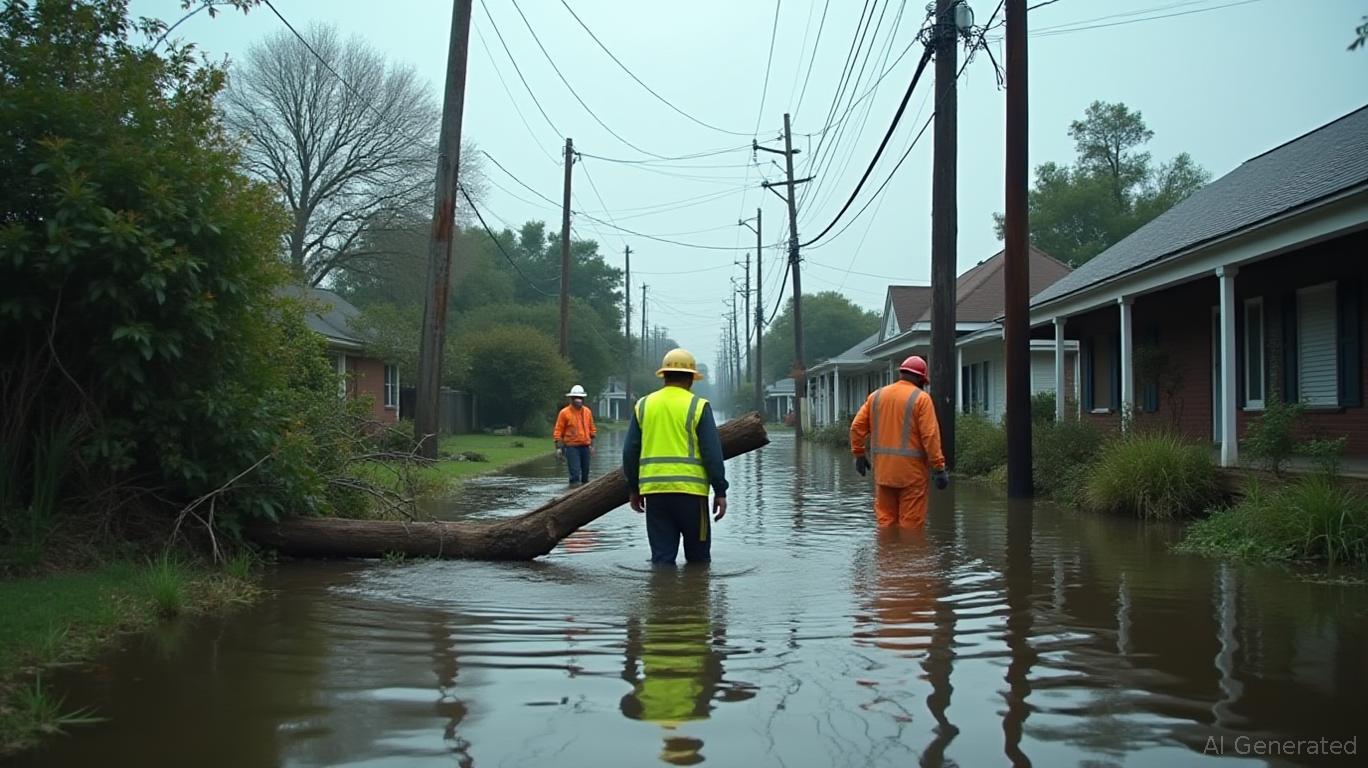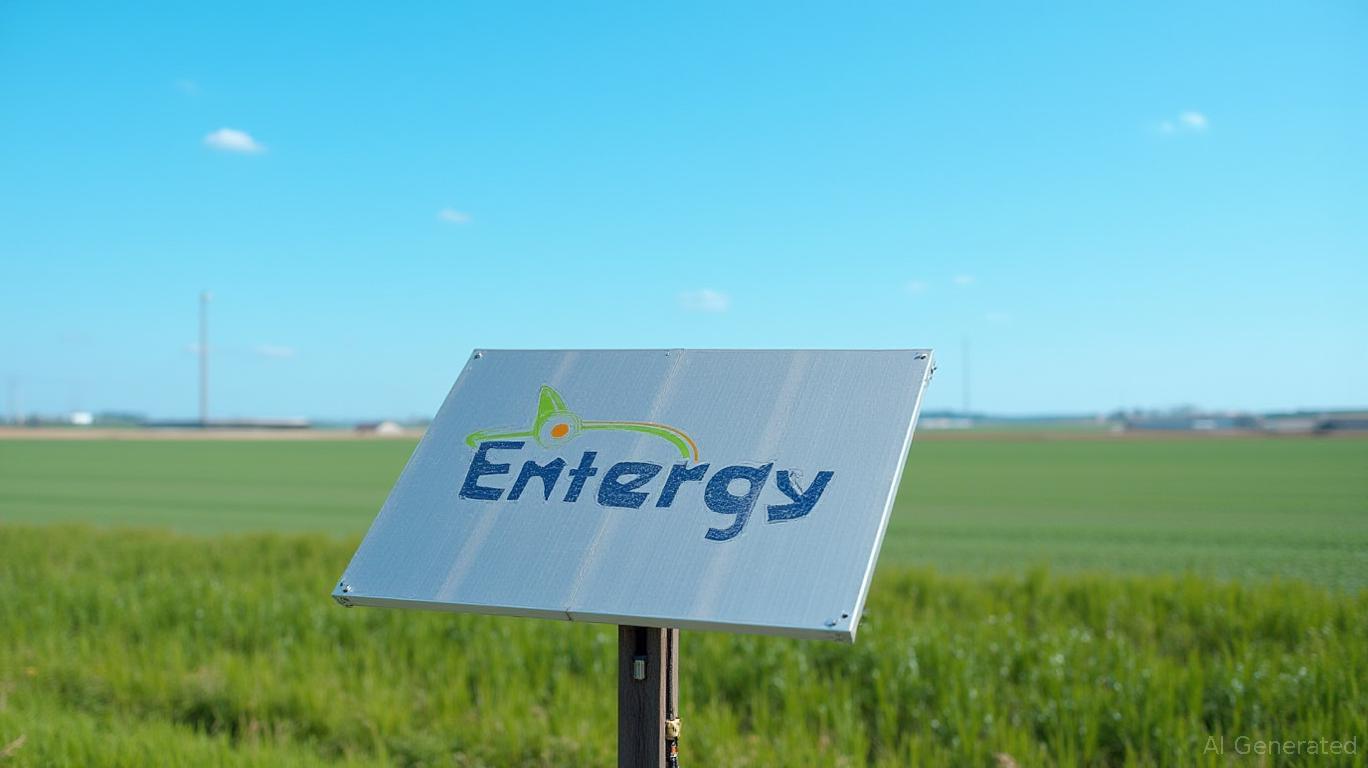AInvest Newsletter
Daily stocks & crypto headlines, free to your inbox
The recent outages in New Orleans and Baton Rouge have thrust
(ETR) into the spotlight, testing its operational resilience and sparking debates about its future as a utility leader. While these events have fueled regulatory scrutiny and public frustration, they also underscore Entergy's unique position as a monopolistic provider in a region desperate for grid modernization. This article dissects Entergy's challenges, regulatory risks, and growth catalysts, arguing that its entrenched market power and access to federal funding make it a compelling long-term utility investment.Entergy's May 2025 outage, affecting over 100,000 customers in New Orleans and Baton Rouge, was a stark reminder of Louisiana's fragile grid. Triggered by MISO's load-shedding due to a nuclear plant shutdown and maintenance delays, the outage exposed systemic vulnerabilities. Neighborhoods like Uptown New Orleans and East Baton Rouge's Westminster and Inniswold areas bore the brunt, with businesses like 45 Tchoup facing steep financial losses.

The Louisiana Legislative Auditor's 2024 report revealed grim data: the state ranks among the worst in grid reliability, with outages increasing 14.3% in frequency and 50% in duration (excluding weather events) since 2013. Entergy's $2 billion investment in grid hardening since 2020 has helped—evident during Hurricane Francine's 2024 recovery—but aging infrastructure and reliance on natural gas (72% of generation) remain hurdles.
Investors should note that Entergy's stock has historically weathered regulatory storms better than peers, thanks to its monopoly in Louisiana. However, short-term volatility persists, as seen in a 10% dip in ETR's stock following the May outage.
Entergy faces dual pressures: public backlash over communication failures and regulatory demands for transparency. The Louisiana Public Service Commission (LPSC) has launched formal hearings into MISO's decision-making, with Commissioner Eric Skrmetta hinting at potential legal action over predictive analysis flaws. Meanwhile, LPSC's 2024 report highlighted Louisiana's 16th-highest average electricity bill nationally—driven by inefficiency, not rates—adding fuel to calls for reform.
A key risk is the potential for storm-related restoration charges. Post-Hurricane Ida, Entergy passed billions in repair costs to customers, and similar moves post-Francine could spark lawsuits or rate caps. Compounding this, Entergy's monopoly status in New Orleans and Baton Rouge limits customer alternatives, amplifying regulatory scrutiny.
While satisfaction scores dipped post-outage, Entergy's entrenched position—combined with its compliance with federal grid modernization grants—mitigates existential threats.
Entergy's path to resilience hinges on federal grants and renewable energy. The Bipartisan Infrastructure Law (2021) allocated $65 billion for grid upgrades, with Louisiana set to receive $1.2 billion by 2030. Entergy's “Louisiana 100 Plan” aims to modernize its grid using these funds, including solar projects and smart meters.

The company has already invested in 3 GW of solar capacity and plans to expand community solar gardens, addressing the Legislative Auditor's call for decentralized energy. This aligns with growing demand for renewables: 70% of Louisiana residents support solar adoption (2023 Entergy survey).
Risk Factors:
- Regulatory fines/penalties over outage mismanagement.
- Customer pushback on storm restoration charges.
- Delays in federal funding disbursements.
Growth Drivers:
- Federal Funding: Entergy's access to $1.2B in Louisiana-specific grants positions it to modernize its grid affordably.
- Renewables: Solar and wind projects reduce reliance on natural gas, lowering outage risks and aligning with ESG trends.
- Monopoly Stability: Entergy's 100-year dominance in Louisiana ensures steady cash flows, supporting a 3.5% dividend yield.
Investment Takeaway:
Entergy's short-term turbulence is a buying opportunity for long-term investors. Its monopoly, federal funding, and renewable pivot position it to dominate Louisiana's grid modernization. While regulatory headwinds exist, they are manageable given Entergy's historical resilience.
Actionable Advice:
- Buy on dips: Use dips below $80 (as of June 2025) to accumulate shares, targeting $100+ over 3–5 years.
- Watch for catalysts: Track LPSC rulings, federal grant approvals, and renewable project milestones.
Entergy's recent outages are a wake-up call, but they also illuminate its path forward. With Louisiana's grid in desperate need of upgrades and federal funds flowing, Entergy's monopoly and strategic investments in renewables make it a rare utility with both stability and growth potential. For investors willing to ride short-term volatility, Entergy could be a cornerstone of a resilient, energy-diversified portfolio.
Disclosure: This analysis is for informational purposes only. Consult a financial advisor before making investment decisions.
Delivering real-time insights and analysis on emerging financial trends and market movements.

Dec.20 2025

Dec.20 2025

Dec.20 2025

Dec.20 2025

Dec.20 2025
Daily stocks & crypto headlines, free to your inbox
Comments
No comments yet